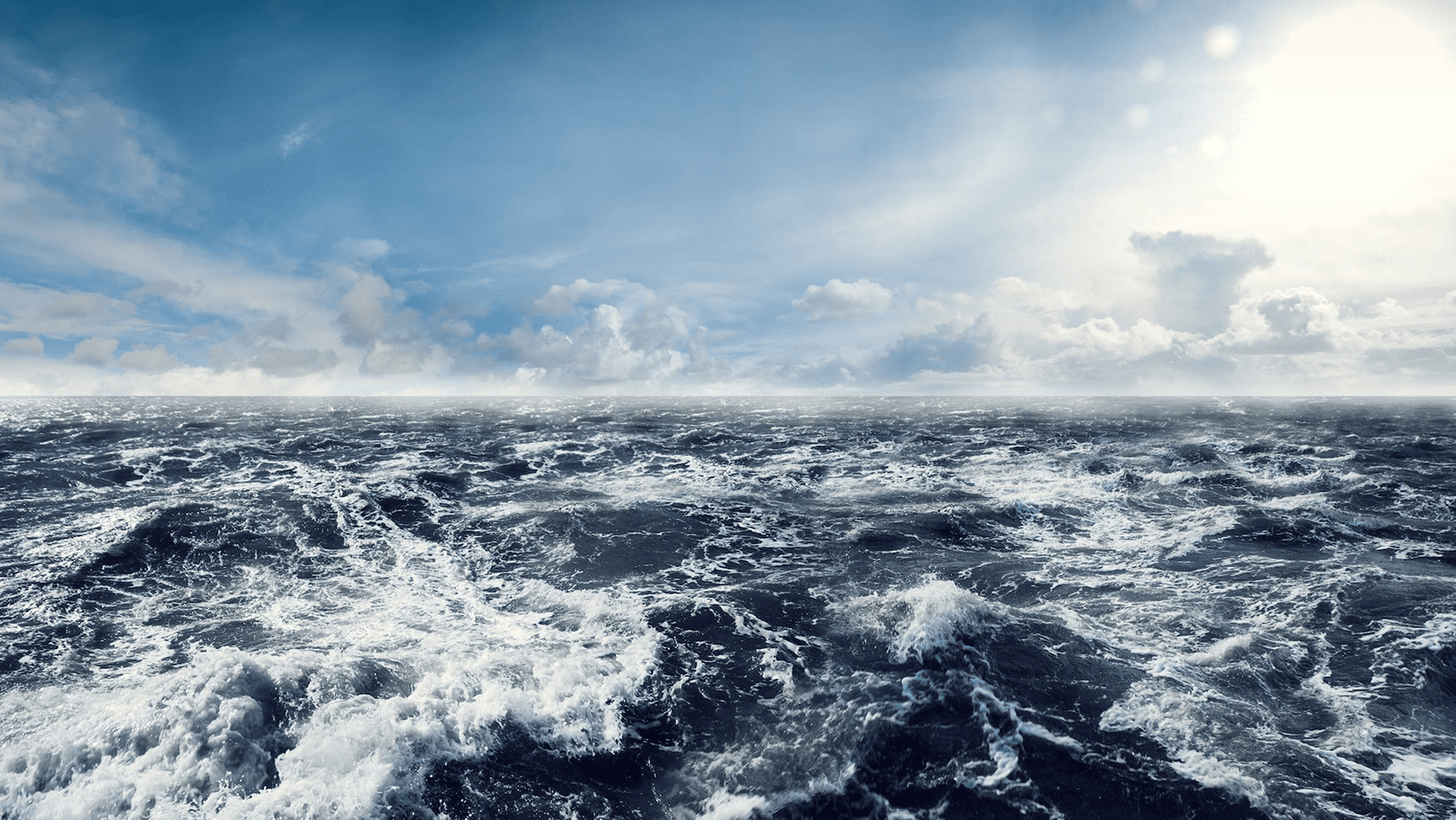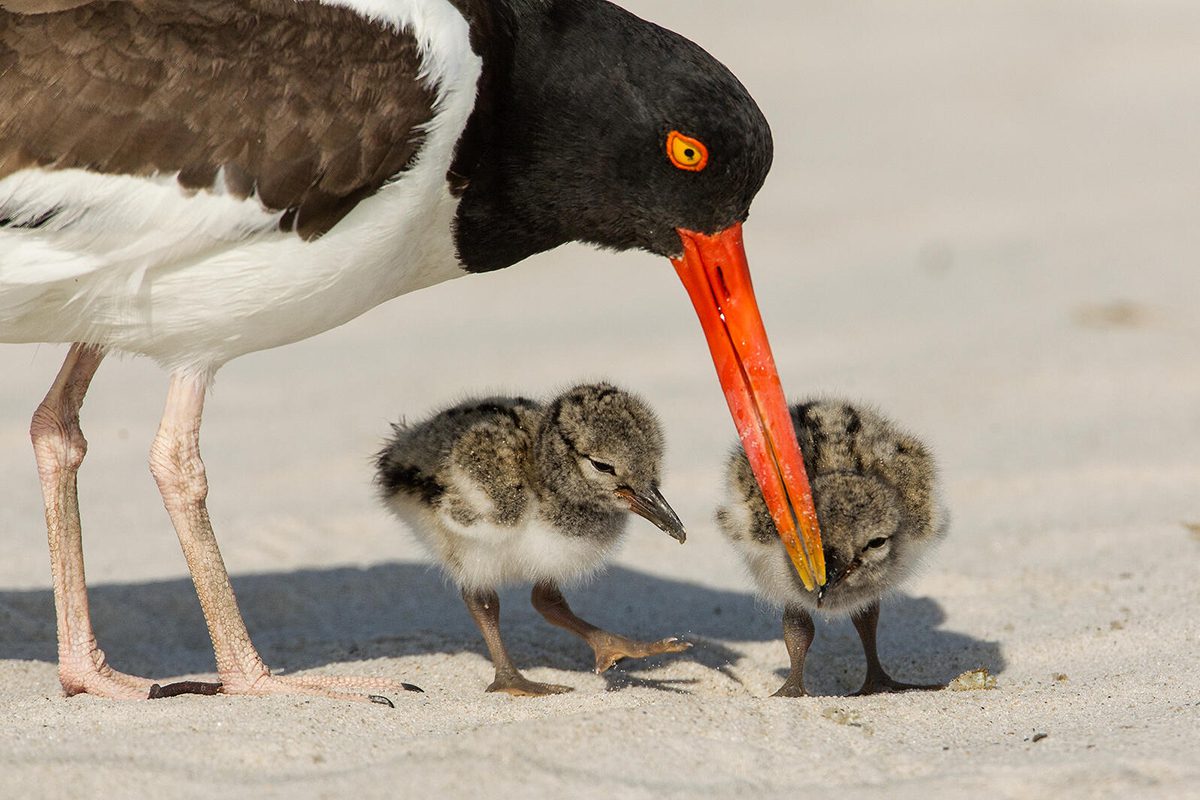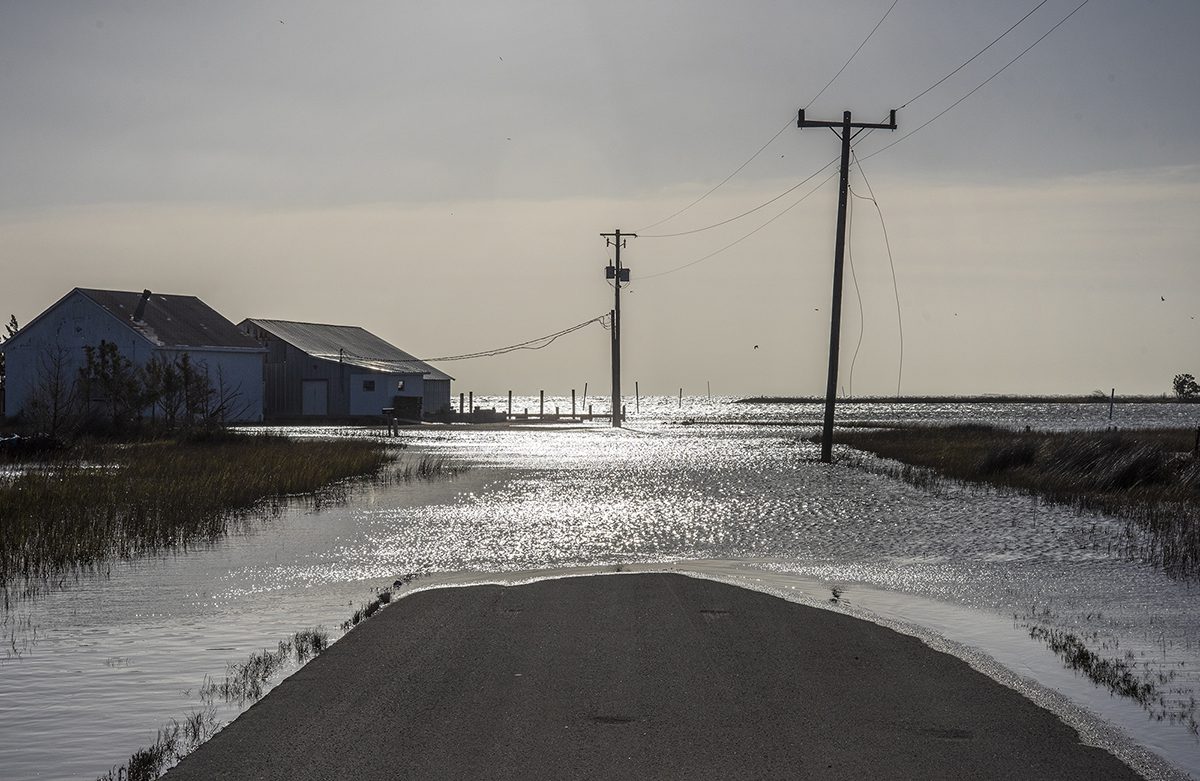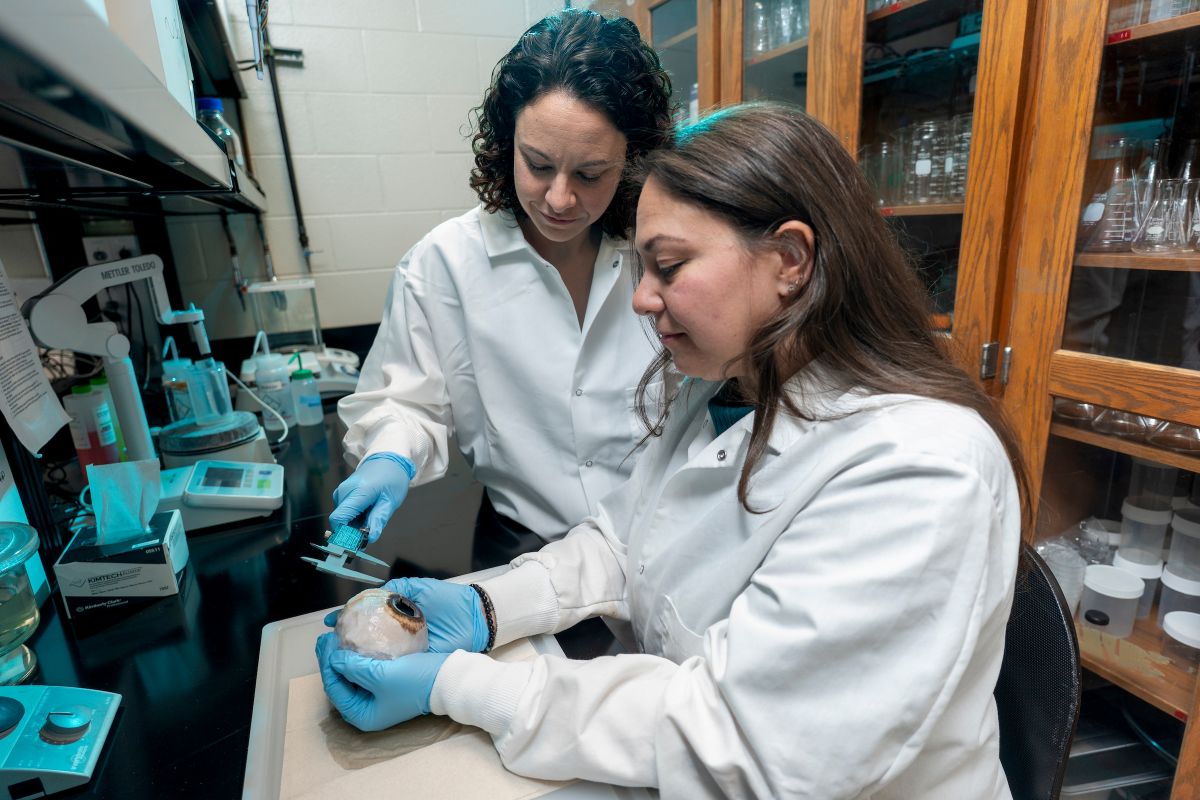First of two parts.
WILMINGTON — Ingredients from the paint on your boat and the soap you use to wash your hands might be in those oysters you eat.
That’s the take-home message from a recent study of contaminants in the tissues of nature’s best water filter, the Eastern oyster. Two professors and four undergraduate students at the University of North Carolina Wilmington are wrapping up the first study to establish a baseline for 10 heavy metals and two organic contaminants in sediment and oyster tissues in Brunswick and New Hanover counties.
Supporter Spotlight
Oysters growing near marinas, harbors and other urbanized areas usually have the highest levels of contamination, the study shows. Arsenic levels in the oysters were among the highest in the country, while mercury levels were about average. A few pockets of polycyclic aromatic hydrocarbons, a group of compounds — some harmful — that are the byproduct of combustion, on Bald Head Island and near the Bradley Creek Bridge may warrant further investigation. To their surprise, the researchers found triclosan in oysters everywhere they’ve looked so far. Banned in Europe, the antibacterial compound is commonly used in this country in a wide variety of consumer products.
 |
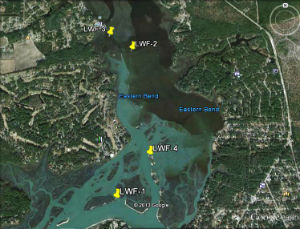 |
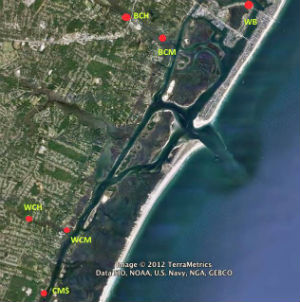 |
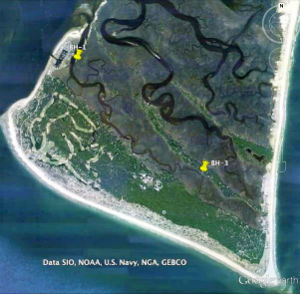 The push pins represent the sampling sites where the researchers collected oyster and sediment samples in Brunswick and New Hanover counties. The water bodies, from the top: Pages, Howes and Hewlett’s creeks; Lockwood Folly River; Intracoastal Waterway near Wrightsville Beach, Bradley Creek, Whiskey Creek, Intracoastal Waterway near UNCW Center for Marine Science; Bald Head Island. Photos: Stephen Skrabal and Ralph Mead, UNCW |
While the study does not address if the concentrations of metals and contaminants are harmful to humans or the environment, the data suggests that none of the heavy metals came close to the federal action level – the threshold for health risks. How the organic contaminants may be affecting the environment or human health remains unclear. Even so, what the researchers found was telling of the historical and current pollution sources influencing water quality in the two counties.
“Our goal was really to get a survey of some of these important heavy metals and organic contaminants in oysters because there’s really not anything known in this area, to our knowledge,” said Stephen Skrabal, a professor of biochemistry and chemistry at UNCW and the associate director for education at the Center for Marine Science.
 Stephen Skrabal |
The other professor, Ralph Mead, is from the same department and helped lead the research on organic contaminants.
The National Oceanic and Atmospheric Administration’s Mussel Watch Program has done similar studies to establish these baselines in oysters around the country and in the Carolinas. None had monitoring sites in Brunswick and New Hanover counties.
Supporter Spotlight
The researchers collected oyster and sediment samples at 19 sites from the Intracoastal Waterway; Wrightsville Beach; Lockwood Folly River; Bald Head Island; and Pages, Howe, Hewlett’s, Whiskey and Bradley creeks. Nearly half of the sampling sites are areas currently open to shellfish harvest. The others were near marinas or in other closed waters.
The state closes shellfish waters either temporarily or permanently when bacteria levels in the water get so high that the oysters and clams are unsafe to eat. What might be in the oysters themselves, such as arsenic or mercury, isn’t considered.
Oysters are often the lab specimen of choice for researchers who want to learn more about the health of a salt-marsh ecosystem because they stay fixed in one place and filter particles in the water through their gills. Certain contaminants that they’ve absorbed from their environment build up in the oysters’ tissue, a process called bioaccumulation. For example, oyster tissue can have 50,000 to 100,000 times more methylmercury – the most toxic form of mercury — than the water that it’s living in.
 Ralph Mead |
People and animals can be exposed to these contaminants by eating them. However, heavy metals and some organic contaminants can occur naturally in the environment and exposure to them isn’t necessarily dangerous. It’s supposedly only in concentrations higher than the Food and Drug Administration’s action level that they can potentially pose harm.
Triclosan, though, is one organic contaminant examined in this study that neither occurs naturally in the environment nor has a regulated safety threshold in this country. “If you find triclosan it’s really only coming from one place, and that’s us,” said Mead.
“Keep in mind that triclosan right now is not a regulated organic compound,” Mead said. “There’s discussion as far as I know in Washington with the EPA that it is a contaminant of concern, but there’s no legislation that mandates thresholds for concentrations. So what the impacts are, what it all means is somewhat up in the air.”
Triclosan is found in countless everyday household products. It’s in hand soaps, toothpaste, toiletries, cosmetics, clothing, kitchenware, furniture, toys and various industrial equipment. It was designed four decades ago to reduce and prevent bacterial contamination before there were laws requiring scientific review of cleaning chemicals. It is banned in the European Union and in Minnesota just recently because of health and environmental concerns.
“Just by the sheer volume of use, it has found its way out into our waterways,” said Mead. “So part of why we looked at this compound was basically to answer the simple question: Is it there? If it’s there, then can we quantify it to some extent; and that’s as far as we have gone.”
In terms of the environment, there are two concerns for triclosan that’s accepted among scientists. “One, it’s an endocrine disruptor, which can cause ecological problems among populations of all sorts of organisms,” said Skrabal. “And number two, there’s concern that because it’s an antimicrobial that it may contribute in some way to antibiotic resistance.”
This is one of the first studies to look for triclosan in oyster tissues.
The problem with endocrine disruptors, Mead explained, “is you can skew the sexes of organisms one way, so it will take away the natural ratios so to speak of males and females, which will ultimately lead to the dwindling and destruction of organisms’ population.”
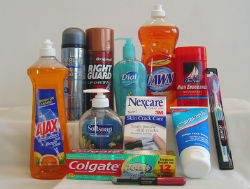 Here are just a few products that contain triclosan. The contaminant makes its way into our estuaries where oysters filter the water. Photo: Medical Drug Effects |
Antibiotic resistance means that certain strains of bacteria could adapt so that they’re not killed by the antibiotics or the antibacterial product, leaving people more exposed to the harmful bacteria.
The EPA and the FDA say on their web sites that “triclosan is not currently known to be hazardous to humans,” but the agencies agree that there are valid concerns and more research is warranted. Several animal studies show that triclosan alters thyroid and estrogen regulation. However, effects in animals don’t always predict what will happen in humans.
Meanwhile, the effectiveness of triclosan in killing bacteria remains debatable. Other than proven to fight gingivitis, the FDA says on its web site that “at this time, the agency does not have evidence that triclosan in antibacterial soaps and body washes provides any benefit over washing with regular soap and water.”
“You’re not getting any benefit from the antibacterial so why use a compound that is not really improving the function of the product but may have some detrimental effects?” asked Skrabal. “It’s just one more thing that makes its way into the environment that doesn’t really need to be there.”
Mead and the students found triclosan in oyster tissues at all four sites that they’ve analyzed. “The triclosan was a shocker, for me anyway,” said Mead. “I didn’t expect to find it.”
At each site they collected 20 oysters and blended them together into one composite sample. The researchers have only examined four sites for triclosan because they weren’t expecting to find it. Based on the surprising data, though, they’ve received an extension to analyze the rest of the sites before completing their final report this summer.
“It really makes me think about the impacts of the chemicals we use every day, especially in large amounts, and how they leak out into the environment,” Mead said.
Tomorrow’s story will detail what their research on polycyclic aromatic hydrocarbons and heavy metals in oyster tissues tells us about what’s influencing water quality in the Brunswick and New Hanover counties.



